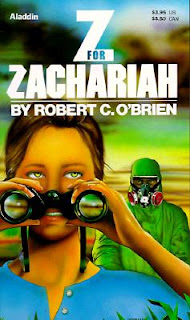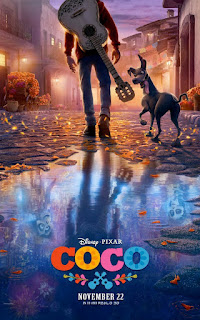Multiple Point Of View Characters and Lois Lowry's The Giver
Currently reading: Harry Potter and the Prisoner of Azkaban by J.K. Rowling
Gathering Blue by Lois Lowry
Currently Writing: Revisions/editing/2nd draft of SOMEDAY (the first book in my Merlin Quartet)
I'm in the middle of rereading two series that have impressed me with their stories in the past: the Harry Potter series and Lois Lowry's Giver Quartet. (Technically, I've only read what was previously the Giver Trilogy, but Lowry has written a new book in the set, Son, which I wanted to read after the others since it has been years since my first reading of any of them.) Rereading these books after some time does odd things to my experience of reading them. First, it makes me examine whether they deserved my attention and praise in the first place. Because I am reading them for a second (or in the case of PoA, third or fourth) time, it's quite likely that they did deserve my attention. A book that invites multiple readings has at least done something right, as Dr. Balázs might say. Second, reading books again (especially after more than a few months) allows me to examine the books on a more critical level than a first reading; when I first read a book, particularly if I am enjoying it and staying up till all hours to finish it, I don't notice the wonderful things that writers do to make their books better. For example, in The Giver, the first memory of ages past that Jonas receives is of riding on a sled down a snowy hill. This is also the image that ends the book. Reading the first time, I didn't notice this. Reading the second time, I noticed it when the memory is first given because I knew what was coming at the end. It's an advantage of multiple readings that you know what happens and can focus on the author's little hints and parallels and images that enrich the telling of the story.
One thing that often happens as I'm reading is that I try to imagine the book as a film. Lately, this means making choices about how I would film the script, adapt the story, set up certain scenes visually. One detail of the story that I had forgotten since my first reading was Jonas' discovery of color. As I began rediscovering this detail, I said, "This film has to be made in black and white, with a gradual revelation of color. First, we get the snatches that Jonas sees without understanding, and then, as Jonas knowingly looks for color, we see more and more of it seeping into the picture." It's this sort of experience that makes me appreciate an author's efforts even more and pushes me to be creative and I enjoy being challenged that way.
Recently, one of my friends wrote a blog about using multiple perspective/point-of-view characters (POV for short); this can mean having more than one first-person narrator in a story or using any number of third person techniques (like having an omniscient narrator dip into the various characters' perspectives as it suits the narrative). Before writing the blog, she polled a group of us writers about our thoughts on using more than one POV character. Using multiple POVs can be fun for the reader and the writer, as neither has to be bored by sticking to one perspective throughout, though it can have its drawbacks as well. I've enjoyed some books with what television folks call "ensemble casts": Robert Jordan's The Wheel of Time series for one. I've even experimented with multiple POVs in my novels; my first was written with an ensemble cast to make Robert Jordan proud (a problem I'll have to address when I get around to fixing it). Not every book is made to have multiple narrators, though. Because I had these thoughts on my mind as I finished reading The Giver, I asked myself if the book could have withstood more than one POV character. After all, Jonas' perspective is very limited. Wouldn't it have been better to have a chapter or two from The Giver's perspective, and maybe one from Fiona's and one from Jonas' father's? Perhaps, but as I thought about it, I realized that The Giver is Jonas' story. It is not long enough or broad enough to hold multiple narrators. That doesn't make it a bad book, or a weak one. It makes it a one POV book.
The problem of which POV and how many to use is one of the most difficult I have faced as a writer lately. As I note at the start of this post, I've been editing and trying to work out a second draft of my first Merlin book (the first draft was completed last summer and has lain dormant over the school year apart from notes and ideas I've jotted down). The largest concern I've had was that telling it from the first person perspective of my main character limits my storytelling more than I had first bargained for when I chose to move from an omniscient narrator. So I have some perspective questions I'll have to address before I finish this round of edits.
Gathering Blue by Lois Lowry
Currently Writing: Revisions/editing/2nd draft of SOMEDAY (the first book in my Merlin Quartet)
I'm in the middle of rereading two series that have impressed me with their stories in the past: the Harry Potter series and Lois Lowry's Giver Quartet. (Technically, I've only read what was previously the Giver Trilogy, but Lowry has written a new book in the set, Son, which I wanted to read after the others since it has been years since my first reading of any of them.) Rereading these books after some time does odd things to my experience of reading them. First, it makes me examine whether they deserved my attention and praise in the first place. Because I am reading them for a second (or in the case of PoA, third or fourth) time, it's quite likely that they did deserve my attention. A book that invites multiple readings has at least done something right, as Dr. Balázs might say. Second, reading books again (especially after more than a few months) allows me to examine the books on a more critical level than a first reading; when I first read a book, particularly if I am enjoying it and staying up till all hours to finish it, I don't notice the wonderful things that writers do to make their books better. For example, in The Giver, the first memory of ages past that Jonas receives is of riding on a sled down a snowy hill. This is also the image that ends the book. Reading the first time, I didn't notice this. Reading the second time, I noticed it when the memory is first given because I knew what was coming at the end. It's an advantage of multiple readings that you know what happens and can focus on the author's little hints and parallels and images that enrich the telling of the story.
One thing that often happens as I'm reading is that I try to imagine the book as a film. Lately, this means making choices about how I would film the script, adapt the story, set up certain scenes visually. One detail of the story that I had forgotten since my first reading was Jonas' discovery of color. As I began rediscovering this detail, I said, "This film has to be made in black and white, with a gradual revelation of color. First, we get the snatches that Jonas sees without understanding, and then, as Jonas knowingly looks for color, we see more and more of it seeping into the picture." It's this sort of experience that makes me appreciate an author's efforts even more and pushes me to be creative and I enjoy being challenged that way.
Recently, one of my friends wrote a blog about using multiple perspective/point-of-view characters (POV for short); this can mean having more than one first-person narrator in a story or using any number of third person techniques (like having an omniscient narrator dip into the various characters' perspectives as it suits the narrative). Before writing the blog, she polled a group of us writers about our thoughts on using more than one POV character. Using multiple POVs can be fun for the reader and the writer, as neither has to be bored by sticking to one perspective throughout, though it can have its drawbacks as well. I've enjoyed some books with what television folks call "ensemble casts": Robert Jordan's The Wheel of Time series for one. I've even experimented with multiple POVs in my novels; my first was written with an ensemble cast to make Robert Jordan proud (a problem I'll have to address when I get around to fixing it). Not every book is made to have multiple narrators, though. Because I had these thoughts on my mind as I finished reading The Giver, I asked myself if the book could have withstood more than one POV character. After all, Jonas' perspective is very limited. Wouldn't it have been better to have a chapter or two from The Giver's perspective, and maybe one from Fiona's and one from Jonas' father's? Perhaps, but as I thought about it, I realized that The Giver is Jonas' story. It is not long enough or broad enough to hold multiple narrators. That doesn't make it a bad book, or a weak one. It makes it a one POV book.
The problem of which POV and how many to use is one of the most difficult I have faced as a writer lately. As I note at the start of this post, I've been editing and trying to work out a second draft of my first Merlin book (the first draft was completed last summer and has lain dormant over the school year apart from notes and ideas I've jotted down). The largest concern I've had was that telling it from the first person perspective of my main character limits my storytelling more than I had first bargained for when I chose to move from an omniscient narrator. So I have some perspective questions I'll have to address before I finish this round of edits.



Comments
Post a Comment
What do you think?